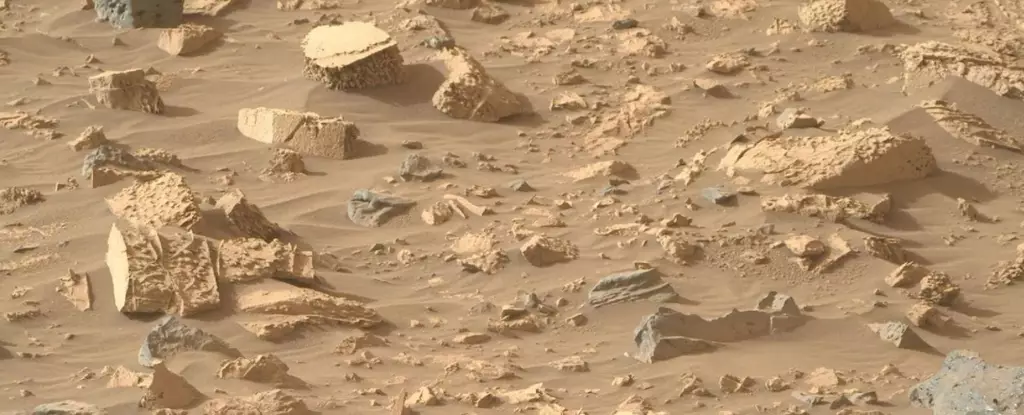As NASA’s Perseverance Rover continues its mission on Mars, it has reached its next destination – Bright Angel. This region has garnered attention for its unusual rocks, affectionately dubbed ‘popcorn rocks’ by scientists. These distinctive rocks provide further evidence of water’s past presence in Jezero Crater, where the rover is currently exploring.
Perseverance’s primary objective is to investigate the potential for life on ancient Mars. In addition to searching for fossilized remnants of past life, the rover is studying environments that could have supported life. Jezero Crater, with its ancient paleolake and sedimentary delta, presents a treasure trove of geological features that offer insights into Mars’ history.
The path to Bright Angel was not without obstacles for Perseverance. Navigating through a field of boulders proved to be a daunting task for the rover. As the boulders grew in size and number, the route planning team had to adjust the course to ensure the rover’s safe passage. The challenging terrain led to delays in reaching the intended destination, testing the patience of mission personnel.
Perseverance employs two modes of travel to navigate rough terrains on Mars. In challenging environments, the route planning team utilizes images to chart the rover’s route in 30-meter increments. For longer journeys, the rover relies on its autopilot mode, AutoNav. However, the rocky terrain posed difficulties for AutoNav, requiring manual adjustments to ensure Perseverance’s progress towards Bright Angel.
To circumvent the boulder field, Perseverance was rerouted through a dune field and across a river channel, saving valuable time in reaching Bright Angel. This strategic decision allowed the rover to explore new geological formations and collect valuable data for scientific analysis. The varied terrain on Mars continues to present challenges and opportunities for the mission.
At Bright Angel, Perseverance discovered rocks that captured the attention of geologists. The ‘popcorn rocks’ observed in the region contain densely packed spheres and mineral veins, indicating past water flow through the rocks. These features suggest a potential link to Mars’ watery history and hold clues to the planet’s geological composition.
As Perseverance ascends Bright Angel, it will conduct detailed measurements and analysis of the ‘popcorn rocks.’ The rover’s instruments, including its abrasion tool and SuperCam suite, will provide valuable insights into the composition of the rocks. The decision to extract a sample for potential return to Earth hinges on the results of these analyses, shaping the course of future exploration on Mars.
Once its investigations at Bright Angel are complete, Perseverance will set its sights on its next destination: Serpentine Rapids. The rover’s journey across Mars continues to unravel the mysteries of the red planet, providing valuable data for scientists to study and deepen our understanding of Mars’ geology and potential for past life.


Leave a Reply